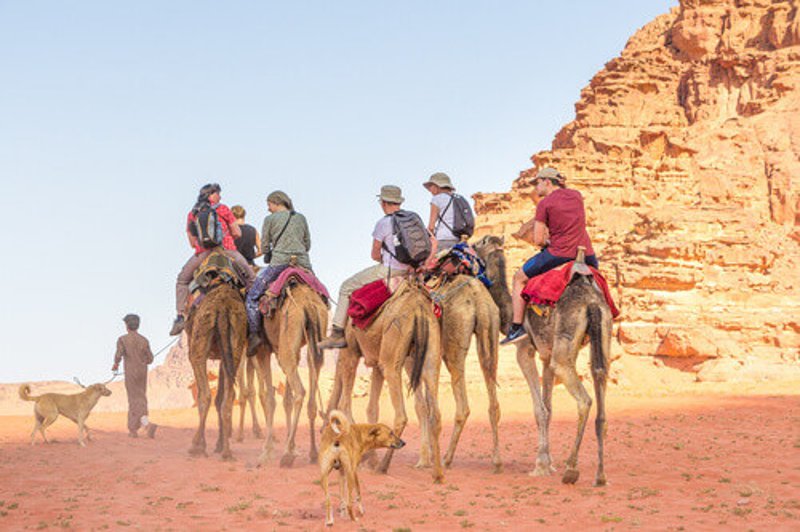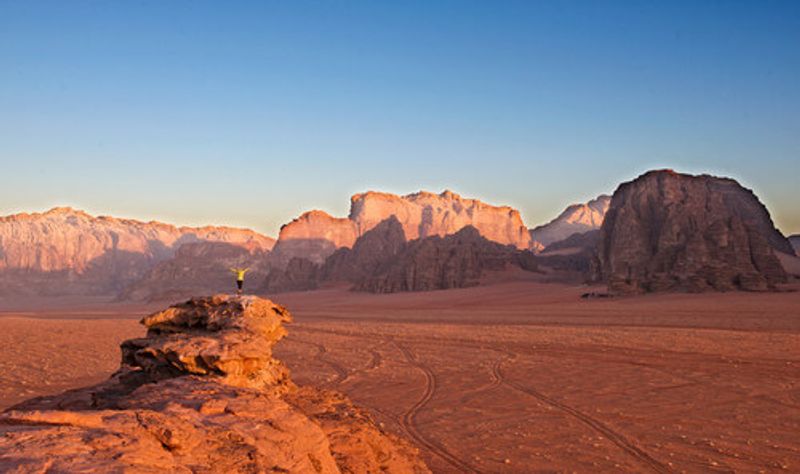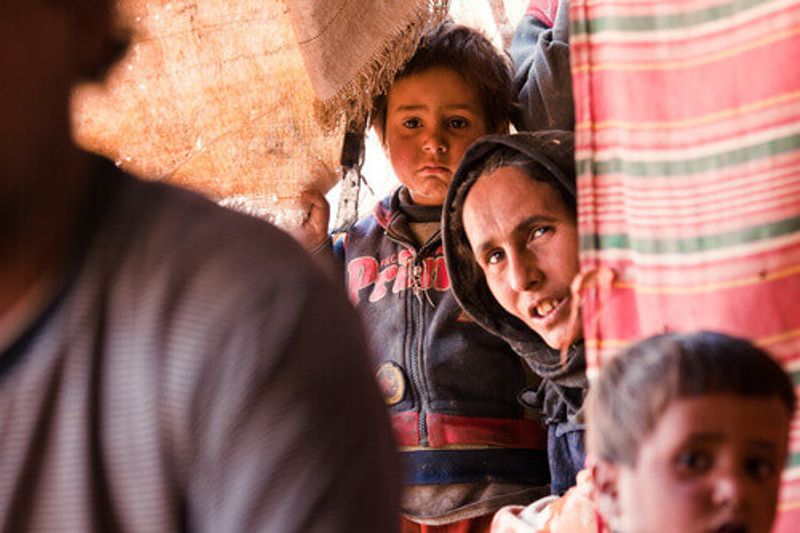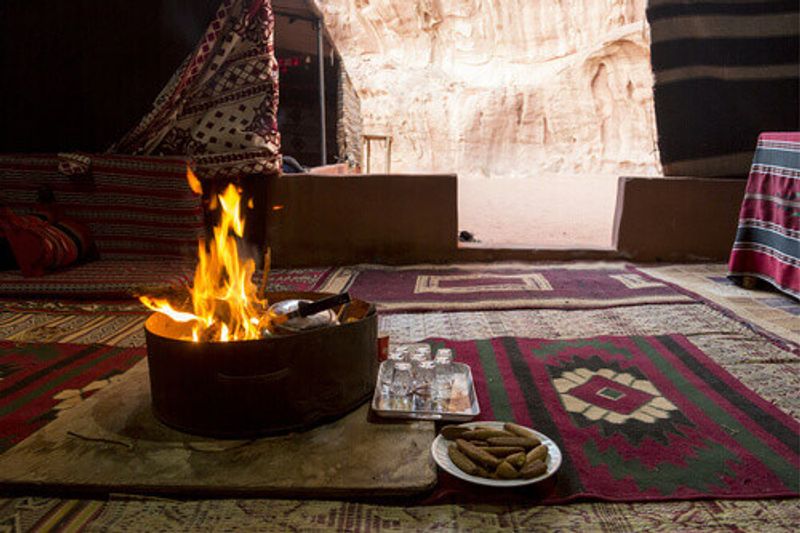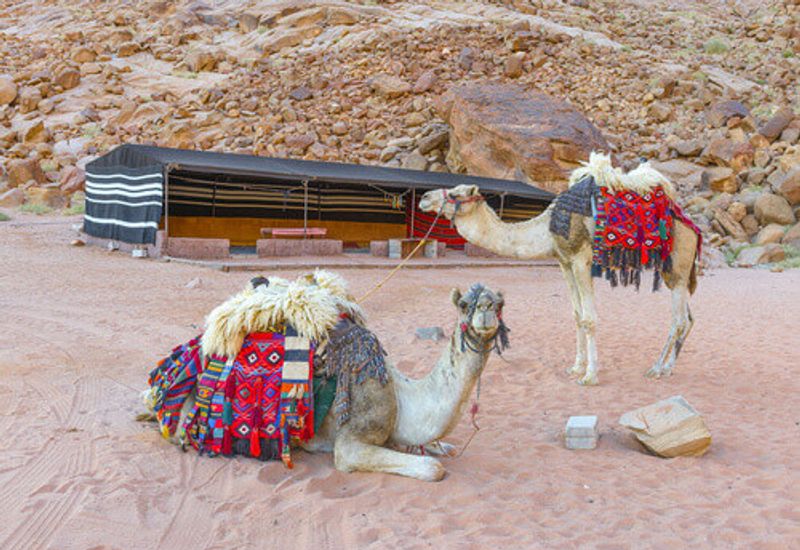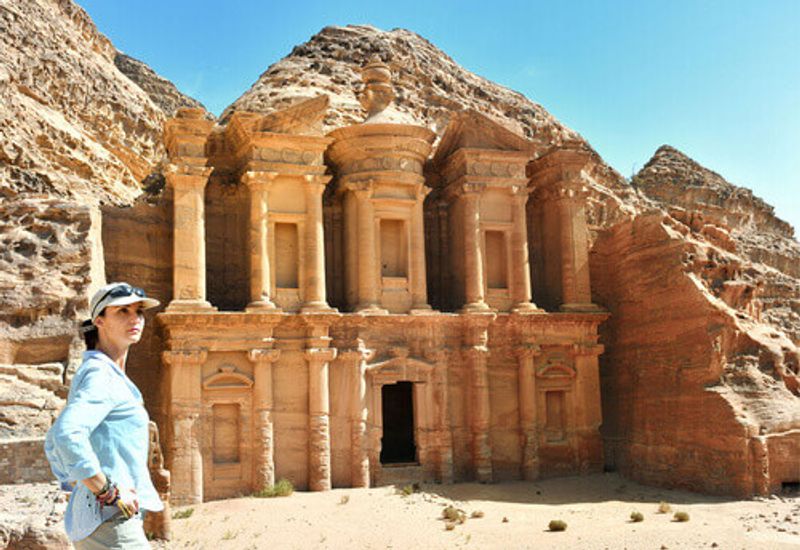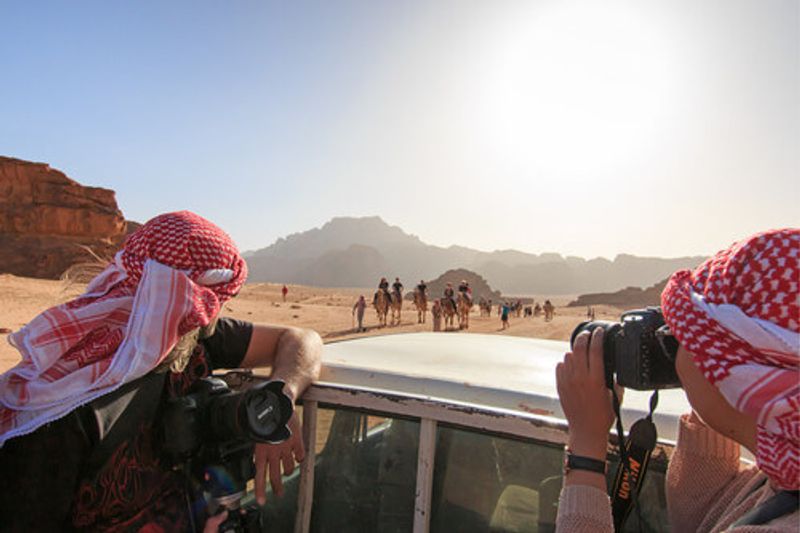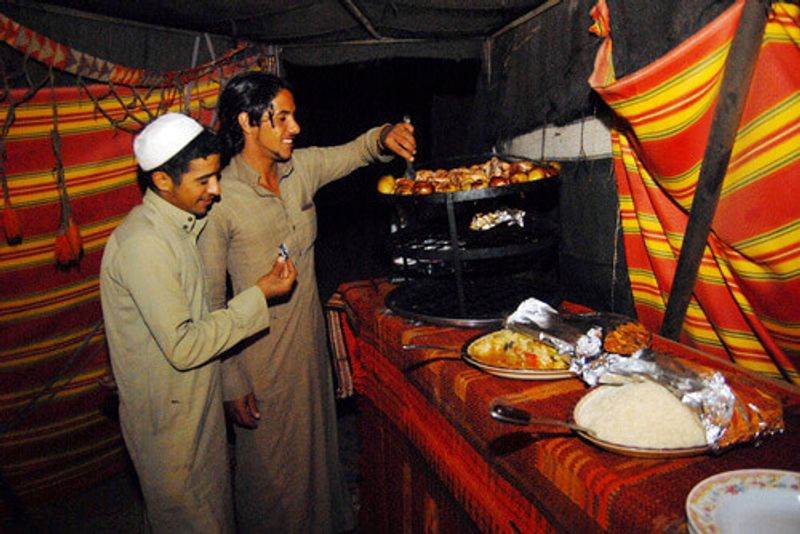Jordan as we know it is young, but its surrounding deserts are an ancient world of unforgettable sights and people
The desert is another world in Jordan, and visiting it for the first time can be a surreal, almost extraterrestrial experience. Born and bred city-dwellers might not be familiar with the feeling of being out such a vast and empty space, nor with the reliance on the 'ships of the desert' – the mighty camel. The desert isn’t just a flat space – Wadi Rum, its most famous desert valley, is a veritable sea of majestic peaks, red-tinged rock formations, and rolling dunes, filled with ancient petroglyphs and even fossils. The desert’s vibrant, orange-red hues are another distinctive feature, which makes it no surprise that movies like Red Planet and The Martian – both films about Mars – were filmed there.
Besides the Rum desert, Jordan is home to well, a lot more desert, but Rum is certainly the biggest and most engaging. Many desert experiences in Jordan are hosted by Bedouin, who are the best guides to what many people regard as an alien and inhospitable environment. Bedouin tribes live around Petra and Wadi Rum, and offer authentic camping, camel trekking, and other traditional activities for travellers looking to experience and understand their unique way of living. In fact, most Bedouins are engaged in tourism.
While at Wadi Rum, a guide is a must. The landscape can get overwhelming and confusing for travellers who don’t know how to orient themselves. Wadi Rum is deceptively huge when you’re actually standing in it, and even with a map and a good sense of direction, even the most seasoned visitors can get turned around. Regardless of which desert you’re at, be mindful of pocketing your own litter – especially in Wadi Rum, which is a UNESCO-protected site.
Meeting the Bedouin
The Bedouin are Jordan’s nomadic, desert-dwelling tribes, and make up a big part of the Jordanian cultural identity; Bedouin (also called Bedu) were ancient wanderers across the deserts of the North Africa, the Arabian peninsula, and Levantine countries, including Palestine, Iraq, and Saudi Arabia. Men wear a Middle Easetern shemagh (also known as a keffiyeh)– a distinctive red and white patterned cloth – while women wear a black usaba headband. Everything about Bedouin life is geared towards surviving the desert, and their clothes help to shield them from the heat, fierce desert winds, and the cold. The Bedouin are famous for their warmth and hospitality, as part of their desert-dwelling creed is to welcome travellers – it is said that Bedouins will only ask for a visitor’s name and purpose on the third or fourth day of their stay. Most Bedouin are Muslim.
Their distinctive tents, woven with goat-hair, are called beit al-sha’ar, which translates to 'house of hair' – the natural goat hair oil helps to keep its occupants safe and dry. The tents are black and often adorned with colourful woven textiles on the inside – they’re divided into different sections for men and women to perform their respective duties: entertaining guests (often with coffee made with a hawin, or mortar and pestle), or cooking and weaving.
While the Bedouin are historically true nomads, wandering and tending to their animals – usually camels, sheep, and goats – many have opted for more rooted lifestyles like farming, while still caring for animals and observing their traditions. Some have given up the lifestyle entirely for life in towns and cities, where they still observe Bedouin festivals, celebrations, and special events; some popular traditions include poetry, music, tent weaving, and sword dances. Many have chosen to incorporate modern elements into their lives, like phones, televisions, or relocation programmes to live closer to schools and hospitals.
The Bedouin have a rigid social code among themselves, including a fierce sense of tribal loyalty, the payment of 'blood money' (diyyeh), and the practice of exile, which is decided by tribal laws.
How to pack
Life in the desert can be scorching during the day, and freezing by night, so it’s important to pack thoughtfully – layers are the key to success. While a t-shirt and breathable, comfy pants may get you through a hot day, you’ll definitely want a sweater and/or a good lined jacket at night. If you’re visiting in September, expect rain, and even flash floods. Avoid tanktops, singlets, and shorts, not just to avoid sunburn (and sandburn), but to respect local conventions that lean towards more modest dressing.
As for accessories, headwear is important, too – a brimmed hat for the day, and a scarf or beanie for the night. Sunglasses are a must for bright days with the sun glinting off the sand, and gloves are always a smart idea after the sun goes down. Bring hiking socks and a good pair of light-to-medium hiking boots or sturdy sneakers – ideally broken in before your trip, so you don’t have to deal with unexpected blisters or an unexpectedly tight-fitting shoe in the middle of Wadi Rum.
If you’re camping, and you’re the sort of person who gets cold easily, consider bringing your own sleeping bag and sleep sheet. Many camps provide tons of blankets, but not sleep sheets, pillowcases, or towels, so prepare accordingly. There’s also not much to do at night, so bring a book or some playing cards to pass the time – don’t forget a torch, a charging bank, and/or batteries (a head torch is especially useful if you have to use outdoor facilities). It’s always a good idea to pack your own toilet roll, just in case.
Finally, no matter how active or inactive you plan to be in the desert, don’t forget sunblock, moisturiser, and lip balm with a good SPF. A small, travel-sized first aid kit also comes in handy. The desert can be a brutal place for skin!
Food and drink
Take your own reusable water bottle, preferably with a built-in water filter, or get a LifeStraw and/or water purification tablets. Hydration is key in the desert, and you’ll thank yourself later! Bedouin hospitality also involves a lot of tea and coffee, and it’s considered impolite to refuse. The tea, which is often made with wild sage and piles of raw sugar (and sometimes various spices), can pack a real punch. They also have some amazing food, so be prepared to try zarb – Bedouin barbecue cooked in a coal-lined pit or earth oven – that some Bedouins have updated with modern technology. There’s also jameed (sundried goat cheese), and the Jordanian national dish, mansaf – a sublime blend of rice, flatbread, yoghurt, and meat, usually lamb.
